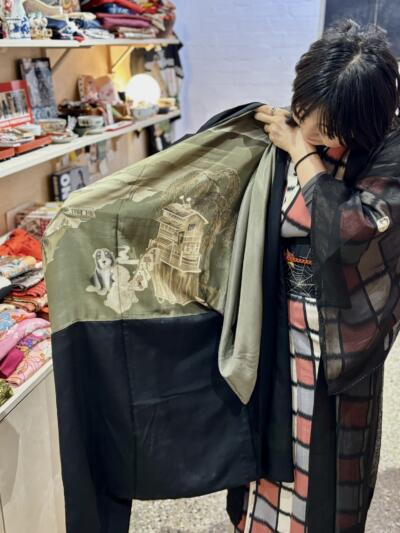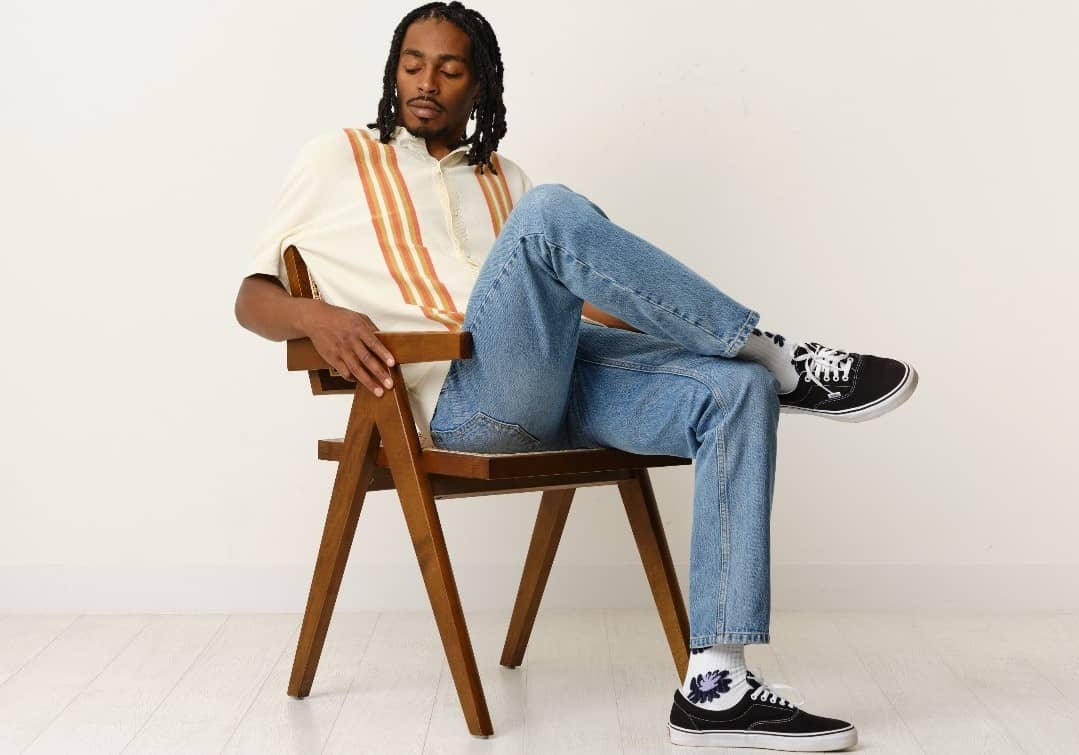The Evolution of Sex Part 3: On the Genetic Superiority of Women
Dec 24, 2025London’s vintage kimono collection – Permanent Style
- Nov 2, 2024
- 0 Comments
459

By Ben St George. Ben is a freelance menswear writer and has been exploring some unusual brands and shops for us.
I wasn’t aware of Furuki Yo-Kimono, a small kimono specialist tucked away at the back of The Factory creative hub in Dalston (East London) until Simon put it on my radar. But when he suggested investigating it, I was intrigued. There are (perhaps unsurprisingly) few dedicated vintage-kimono retailers in Britain as far as I know – Kimono Kimono in Bristol being a notable exception.
I’ll admit to having been something of a Japanophile growing up. I was a nerd (no surprise there, I’m sure) and the country of katsu, kaiju and Kurosawa captured my imagination in a way that has always stayed with me.
That included the kimono, and while it obviously falls outside the normal coverage of Permanent Style, it is still very much traditional tailoring – and with as rich a history as any of the major Western codes.
Another admission – I have at one point owned a kimono, purchased many years ago during a trip to Tokyo. It never saw wear outside of the house, but I loved it as a dressing gown. Traditional British gowns have often felt a little staid and overcooked on me, but the long, straight lines of the kimono and its ‘wrapability’ sat on my lanky frame in a manner that I found both flattering and comfortable.
An unfortunate cooking oil incident saw that piece prematurely laid to rest – and as the cultural conversation around such things has evolved over the past few years, I did begin to feel a nagging sensation that perhaps kimono were not something for me.
No small amount of ink has been spilled celebrating Japan’s remarkable assumption and evolution of British and American dress – generally considered an unalloyed good – but can a non-Japanese consumer do the reverse? Are kimono something that I could (or should) wear, as a white guy?
“As long as we can see people love them and enjoy wearing them, that’s fine,” says Furuki Yo-Kimono’s founder, Sonoe Sugawara, when I put this to her. “In fact I’d like my shop to be a gateway to kimono fashion for non-Japanese people. We’ve been wearing kimono for thousands of years, but our style has been influenced by non-Japanese people’s fashion as well.”
Sonoe trained as a traditional kimono fitter in Japan in her twenties. Following a career in London as a vintage fashion buyer, she started Furuki Yo-Kimono after her husband’s family discovered an enormous horde of antique kimono in their attic.
“There were so, so many – and everything was being packed up for Korea,” says Sonoe. “They didn’t know what to do, and tried to get rid of them. So I just said, ‘I’ll take everything!’”
Kimono translates plainly as ‘things to wear’. Whilst some kimono do have a ceremonial function, most are just “general clothes”, as Sonoe puts it – what we might call workwear, loungewear or sleepwear, all sharing the same fundamental shape.
That shape has remained almost unchanged since the eighth century – straight cut, with a rectangular body and square sleeves, fastened with a sash or obi – but the details have always been in flux.
“We’ve had a lot of influence from foreign people, like Chinese, Korean, Indian people, through the Silk Road. In the 16th century, the Portuguese and the English. Rulers and samurai loved foreign culture, so they adapted it into our traditional style, [which became] fashion.”
Sonoe’s menswear customers – the majority are men, mostly American and British – often come looking for statement pieces: something to wear for special occasions and parties, or as a dressing gown at home. But Japanese denim-heads seek her out as well, keen to shop the selection of 19th century boro pieces – indigo-dyed worker’s coats, distressed and hand-patched over decades of wear (above).
She also has a significant following of architects. “LOTS of architects,” laughs Sonoe. “I think because they like structured design and those repeated geometric patterns.”
Whilst some of Sonoe’s rarest pieces sell for up to £2000, the vast majority are surprisingly affordable, ranging between £150 and £250. Sonoe is also extensively knowledgeable about the collection – a treat in and of itself, as so many pieces have unique and fascinating stories to them.
Much of her collection focuses on pieces from the 1920s and 1930s – a vibrant pre-war period when Art Deco mixed with traditional Japanese design. The full-length house kimono from this period are particularly elegant, woven from hefty and lustrous jacquard silk that has a svelte yet substantial feel in the hand, and drapes beautifully.
Haori – shorter ‘jacket-style’ kimono, traditionally worn over top of a full kimono – are some of Sonoe’s best-selling pieces (above). You may have seen them reinterpreted by the likes of Kapital, Universal Works or Maharishi, but the real deal is quite special. Traditional haori often hide resplendent embroidered landscapes or motifs symbolising luck, like tigers or dragons, that only the wearer might see.
Many of Sonoe’s menswear clients like these haori particularly. I’m not my style is bold enough to make one work, but I love the way a more playful dresser like Scott Fraser Simpson (above) can incorporate one into an outfit alongside Western clothing, layering it over a shirt or knitted tee with high-waisted trousers.
For me, Sonoe’s encouragement has made me imagine a world where I would wear a kimono again at home – I find them elegant and eminently wearable, especially some of the more somber, Deco-influenced pieces. Their sense of history and one-of-one, hand-crafted nature also speak to me.
Out of the house I’m not so sure, but however it’s going to be worn, this collection is a treasure trove of kimono. And it’s hard to deny that these beautiful pieces deserve to be worn. “They’re still clothes,” as Sonoe says, “and clothes have to be worn with joy”.
Sonoe works primarily by appointment – you can contact her via Instagram or directly at the email address below if you’d like to visit. She also has a limited ecommerce presence, though for remote customers she more often conducts consultations via Facetime and WhatsApp.
FURUKI YO-KIMONO VINTAGE
Pod 15, The FACTORY, 21-31 Shacklewell Lane, London E8 2DA
[email protected] @furukiyokimonovintage
www.furukiyokimono.com
Publisher: Source link







